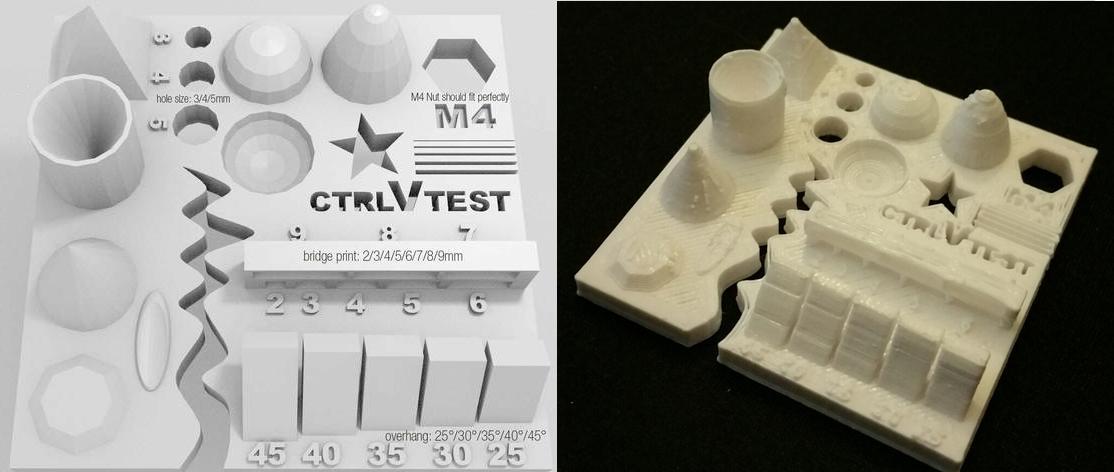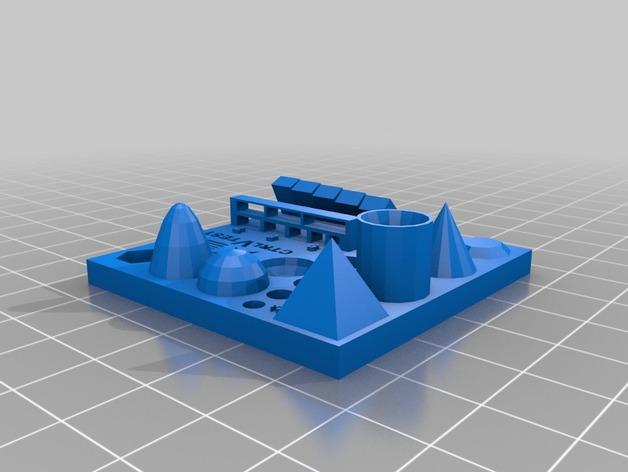 One of the most annoying things about 3D printers is the fact that no two machines are made exactly alike. Sure the parts may all be the same — but the calibration and alignment of these vital parts can be off by just a fraction of a millimeter, and in turn cause issues with prints.
One of the most annoying things about 3D printers is the fact that no two machines are made exactly alike. Sure the parts may all be the same — but the calibration and alignment of these vital parts can be off by just a fraction of a millimeter, and in turn cause issues with prints.
One man, who goes by the name Ville, was getting tired of seeing multiple 3D printer calibration parts all come about independently of one another, so he set out to create something a bit different. With over 6 years of experience in the 3D printing space, he has had his fair share of issues when testing and calibrating new 3D printers.
“It’s hard to see where a problem is created, e.g. Hardware/Software,” Ville tells 3DPrint.com. “There are a lot of different calibration parts available, but most of them are split up into several parts. I was thinking [about creating] an all-in-one solution to see with one print what’s working or not.”
 So this is exactly what Ville ended up doing. He set out to create an all-in-one 3D printable calibration test which can determine many different issues and problems all at once.
So this is exactly what Ville ended up doing. He set out to create an all-in-one 3D printable calibration test which can determine many different issues and problems all at once.
“Often you don’t know if your printer is ready for complex files, so with this you have an easy option to check problematic printing/slicing stuff,” he explains.
Anyone with a 3D printer can download and print this file free of charge from Thingiverse. The printer settings should be set to its lowest possible layer height (0.1 mm in most cases), with an infill of approximately 33%, in order to ensure that all the details come out correctly. Once the object has finished printing, you can check to make sure everything is calibrated and working correctly by using the following methods, provided to us by Ville, below:
- Size: the object is 4 x 50 x 50 mm (baseplate) — measure with a caliper
- Hole size: 3 holes (3/4/5mm) — measure with a caliper/drill
- Nut size: M4 nut should fit perfectly — insert an M4 nut; it should need a little pressure
- Fine details: pyramid, cone, all numbers — check if all things look nice and smooth
- Rounded print: wave, half sphere — check if all things look nice and smooth (not every printer handles round things similar, e.g, it will be split in polygons) see here for more details
- Minimum distance between walls: 0.1/0.2/0.3/0.4/0.5 mm — depending on your nozzle size and slicer settings you will get different results
- Overhang: 25°/30°/35°/40°/45° — depending on printed material/cooling, these will not be as seen on the rendering provided
- Flatness: all flat areas — these should be flat with no gaps
It takes approximately 50 minutes to print this test part on most FFF-based 3D printers, and once complete, it can used to easily determine problems that a particular 3D printer has. The results can then be compared with other users who own the same model of printer, to determine if it is an issue that the manufacturer has with all their machines, or if it is simply a misconfiguration in that particular machine. These tests can also be used in order to compare 3D printers from different manufacturers to see which ones perform better in different situations.
 As for Ville, he works for a company that develops their own 3D printers, so this part will allow for them to ensure that they are creating the best potential machines possible. Perhaps other 3D printer manufacturers should do the same.
As for Ville, he works for a company that develops their own 3D printers, so this part will allow for them to ensure that they are creating the best potential machines possible. Perhaps other 3D printer manufacturers should do the same.
Have you tested this part on your 3D printer? We’d love to see your results. Feel free to post them in the All-in-One Test Print forum thread on 3DPB.com.
Subscribe to Our Email Newsletter
Stay up-to-date on all the latest news from the 3D printing industry and receive information and offers from third party vendors.
You May Also Like
3DPOD Episode 198: High Speed Sintering with Neil Hopkinson, VP of AM at Stratasys
Neil Hopkinson, a pioneering 3D printing researcher, played a pivotal role in developing a body of research that is widely utilized today. He also invented High Speed Sintering (HSS), also...
GE Additive Transforms into Colibrium Additive in New Brand Move
One of the largest and most compelling companies in the 3D printing industry, GE Additive, has undergone a rebrand. Now, known as Colibrium Additive, the company and its new name...
HP & INDO-MIM Collaborate to Boost Metal 3D Printing in India
HP Inc. and INDO-MIM, a US- and India-based supplier of metal injection molding (MIM) powders and contract manufacturer, have announced that the two companies will collaborate to accelerate additive manufacturing...
Nylon 3D Printed Parts Made More Functional with Coatings & Colors
Parts 3D printed from polyamide (PA, Nylon) 12 using powder bed fusion (PBF) are a mainstay in the additive manufacturing (AM) industry. While post-finishing processes have improved the porosity of...
































